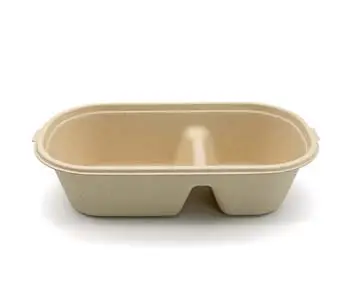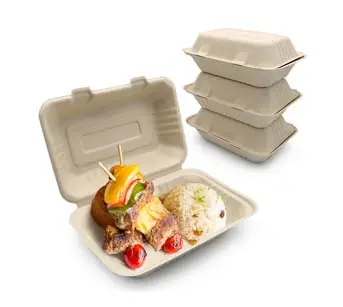The debate over sustainable packaging materials continues to gain momentum as we become more conscious of our environmental impact. One such contender in the sustainable packaging arena is bagasse-based food packaging, and it's pitted against traditional plastic. In this blog, we'll explore why bagasse-based food packaging matters and why it's a game-changer in the fight against plastic pollution.
The Plastic Predicament
Plastic has long been the primary choice for food packaging due to its affordability and versatility. However, the environmental consequences of our plastic addiction are undeniable. Plastic pollution has reached alarming levels, harming wildlife, oceans, and ecosystems. The need for an alternative that is both functional and eco-friendly is more pressing than ever.
Bagasse: The Sustainable Alternative
Bagasse-based food packaging offers a sustainable alternative to plastic that addresses many of the issues associated with plastic packaging. Here's why it matters:
Biodegradability and Compostability
One of the most significant advantages of bagasse-based packaging is its biodegradability. Bagasse products naturally decompose, returning to the earth without causing harm. In contrast, plastic can take hundreds of years to break down, contributing to long-lasting pollution.
Reduction in Plastic Waste
Opting for bagasse-based packaging reduces the demand for single-use plastics. By making this choice, consumers and businesses alike can significantly reduce plastic waste and its adverse effects on the environment.
Resource Utilization
Bagasse is a byproduct of the sugarcane industry, and its use for food packaging maximizes resource utilization. By using bagasse, we minimize waste and make the most of a renewable resource that might otherwise go to waste.
Lower Carbon Footprint
The production of bagasse-based food packaging typically has a lower carbon footprint compared to plastic manufacturing. This results in reduced energy consumption and fewer greenhouse gas emissions, further contributing to environmental preservation.
Bagasse-Based Food Packaging in Action
Bagasse-based packaging is not just a theoretical solution; it's actively making a difference. Restaurants, cafes, and food service industries are increasingly adopting bagasse products, offering customers a more sustainable and eco-friendly dining experience. From bagasse plates and cutlery to compostable takeout container, this green alternative is proving its practicality and reliability.
A Step Towards a Greener Future
The choice between bagasse and plastic food packaging is more than a matter of convenience; it's a decision that impacts the environment and future generations. By choosing bagasse-based packaging, individuals and businesses take a significant step toward a greener and more sustainable future.
Supporting Sustainable Agriculture
The production and use of bagasse-based packaging also support sustainable agriculture by providing additional income for sugarcane farmers. This contributes to the overall sustainability of the sugarcane industry, making it an environmentally conscious choice.
Educating and Influencing
The adoption of bagasse-based packaging can help raise awareness about the environmental impact of plastics. By making sustainable choices and sharing information about bagasse, we can influence others to follow suit and be more conscious of their packaging decisions.
In conclusion, the battle between bagasse and plastic is not just about materials; it's about making informed choices that impact the planet. Bagasse-based food packaging matters because it provides a sustainable, eco-friendly, and effective solution to the plastic problem. By supporting and embracing this alternative, we can all play a part in reducing plastic pollution and creating a more sustainable and cleaner world for future generations.




